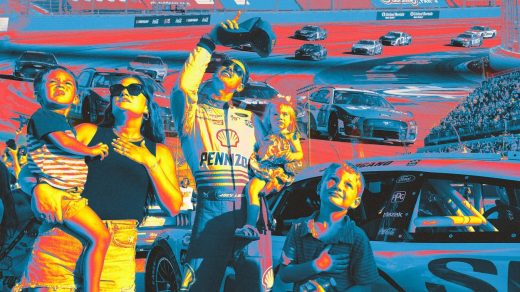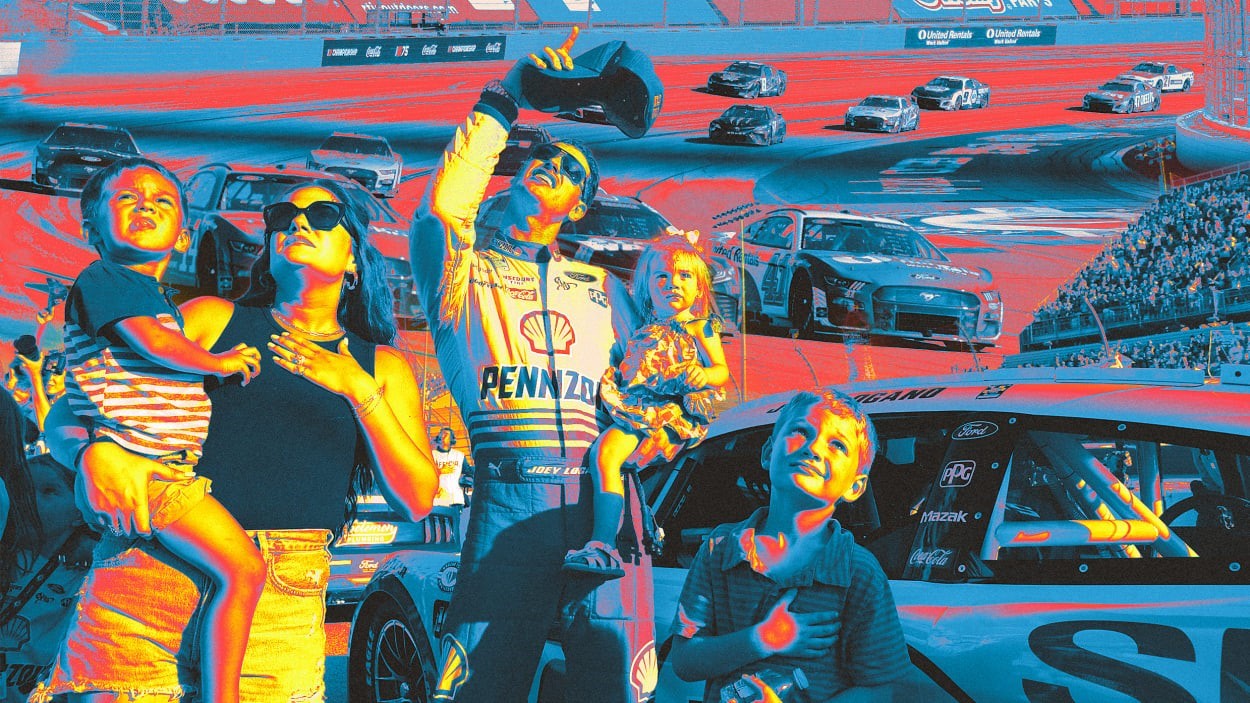Nascar gets the Netflix treatment. Can it rev up the brand?
Branded is a weekly column devoted to the intersection of marketing, business, design, and culture.
This week, a possibly unexpected name crashed Netflix’s list of top shows in the U.S.: Nascar. Nascar: Full Speed, a five-episode docuseries using the 2023 “playoff” series of races as a backdrop and narrative arc, gives the competition among some of the sport’s current elite drivers what amounts to a reality-show treatment. It adds something more like a character-driven and multi-layered story to, you know, cars driving fast in an oval hundreds of times.
In part, this seems like an obvious attempt to replicate the surprising success of Formula 1: Drive to Survive, the Netflix docuseries that launched back in 2019 and, now heading into its sixth season, has become a hit that has boosted that sport’s overall profile, and ratings. But it also fits in with a broader effort to soup up Nascar’s media strategy—and image. Late last year, the organization announced a batch of streaming deals valued at around $7.7 billion, as it continues to pursue efforts dating back several years to diversify its audience. The idea is that this is not your father’s Nascar.
Many sports (apart from NFL football) have faced challenges in adjusting to the long shift from appointment-TV viewing from a finite universe of sources to on-demand streaming and an audience-fragmenting media landscape. And Nascar, a cultural touchstone in the heyday of broadcast media, seemed particularly out of sync with the modern entertainment environment.
As recently as the mid-aughts, the sport was mainstream enough to serve as the context for the hit Will Ferrell vehicle, Talladega Nights. Nascar’s biggest stars, including Dale Earnhardt Jr. and Jeff Gordon, were household names. But from 2005 to 2016, its television ratings took a white-knuckle plunge of 45%—double the decline of NBA ratings. “Nascar’s fan base, largely working-class and white, is getting older overall,” and generally less affluent than other sports fan bases, The Wall Street Journal pointed out back then, making it less attractive to advertisers.
But even before Full Speed took shape, Nascar was showing signs of accelerating interest, albeit after years of seeming stuck in reverse. The recent set of streaming- and television-rights arrangements involve seven-year deals with Amazon Prime Video, Warner Bros. Discover (through TNT and the Max streaming service), Fox, NBC, and the CW Network. These kick off in 2025 and are reportedly worth 40% more than Nascar’s prior deals. For Amazon and Max in particular, the arrangements reflect streamers’ growing interest in exclusive live sports content.
Meanwhile, at the same time that portions of corporate America seem intent on avoiding the subject of diversity, equity, and inclusion, Nascar openly proclaims its interest in a more varied fan base than the one that’s defined its image in the past. In 2020, for example, it finally got around to banning the Confederate battle flag from its events—not exactly a radical step, but a turn in the right direction. Nascar chief marketing officer Peter Jung recently told The Journal that about 26% of Nascar fans are “multicultural,” up from 20% a decade ago. The sport’s most successful Black driver, Bubba Wallace, is a prominent figure in Full Speed, and the series highlights Michael Jordan’s role as a team co-owner.
Nascar has made streaming documentaries before, but Full Speed’s real goal seems to be making the sport’s biggest stars more relatable. That’s consistent with how Nascar has described its broader strategy. “We’re going to incent drivers for their time and effort to go above and beyond to build their persona, build their relevance,” Jung said, “build their name and ultimately to hype the sport.”
Wallace is one example of a compelling character, but so is Denny Hamlin, a star driver who seems to relish his role as something of a heel. The show highlights the sport’s high-tech precision and risks, but also spends time with drivers’ families (and pets) and takes the viewer into their sometimes-lavish homes. The playoff season’s gradual-elimination structure is well-suited to drawn-out drama, so the whole thing doesn’t end up feeling like an explainer, or a five-hour ad for Nascar.
That said, it kind of is a five-hour ad for Nascar. Aside from Drive to Survive, it takes inspiration from the HBO-originated series Hard Knocks and perhaps especially ESPN’s The Last Dance, a pandemic-era smash, and the PGA-Netflix series, Full Swing. For those who already follow Nascar, it’s a closer look behind the scenes and into star drivers’ lives. (Early reviews suggest the series is being warmly received by auto-sport fans.) For newbies, it’s a crash course disguised as a tale of elite competition. For Nascar, the checkered flag is “introducing them to this world that hopefully piques their interest and makes them want to take the next step toward fandom,” Tim Clark, Nascar’s senior vice president and chief digital officer told The Athletic. This year’s Nascar “playoff” season series of races begins this month, including the high-profile Daytona 500 on February 18. We’ll see if Full Speed jump-starts fresh Nascar interest in real life.
(23)



